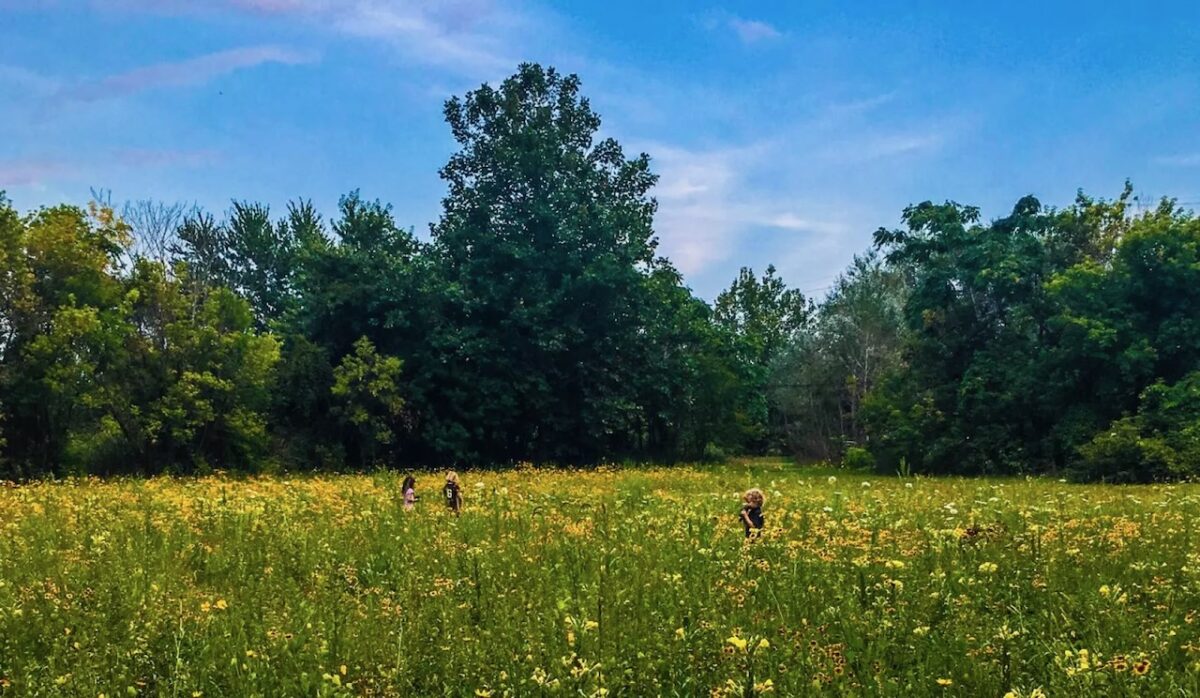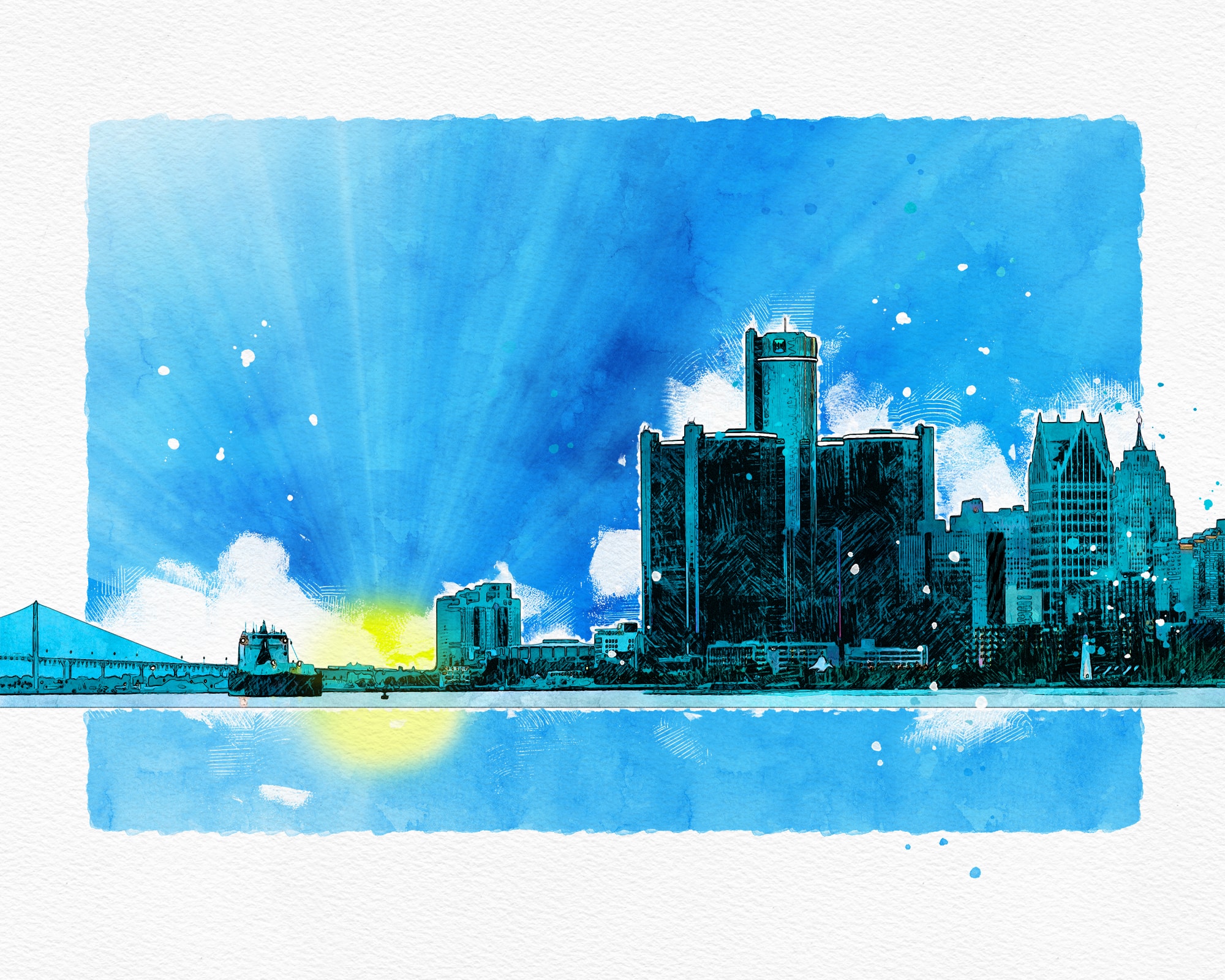Overview:
-Detroit's vacant land represents an opportunity for future green space development, says Michigan Technological University professor David Watkins.
-Geospatial analysis reveals that higher social and environmental vulnerability scores correlate with lower green space availability in Detroit.
-About 6% of the city's land is used for parks and recreation vs. a national median of 15%.
By RACHEL MINTZ
Michigan Public
A Michigan Technological University geospatial analysis found that there are inequities in access to green spaces in Detroit.
The analysis, published last month in the journal Urban Forestry & Urban Greening, found that 87% of Detroit buildings are further than a quarter of a mile in walking distance from a park or recreational area. More than half (53%) of buildings were farther than half a mile, or about a 10-minute walk.
David Watkins is a professor of civil, environmental, and geospatial engineering at Michigan Technological University. He worked on the analysis. Watkins said the analysis was unique from previous work because it provided information on availability to all types of green space. He said many prior studies analyzed proximity to only larger parks or formal green spaces.
An example of a non-formal green space studied was community gardens. Researchers found that 94% of buildings in Detroit are farther than a quarter of a mile from a community garden, while 49% are farther than 1 mile along a road or path. Watkins said, however, that the analysis had some limitations.
“One limitation is that we can’t claim that we’ve found all the community gardens,” Watkins said.
Watkins and Jessica LaReaux, a PhD student at Michigan Technological University, didn’t only look at access to green spaces in Detroit. They also investigated who has access to them. The team looked at how social and environmental vulnerabilities compare to green space availability in the city.
Results of the analysis found that higher social and environmental vulnerability scores, which are a composite of social and environmental traits such as facing language barriers, proximity to environmental cleanup sites, or receiving a low income, are significantly correlated with lower green space availability. The results did find some fluctuations across the city, though. In some parts of the city, park areas were equitably distributed, according to the analysis.
Watkins said Detroit is a unique city in that its population is decreasing, opening up vacant land. He said he hopes that vacant land can be repurposed and that future development in the city can be informed by the recent analysis.
“We were referring to those as sort of informal green spaces that may not actually be developed for any community purpose,” Watkins said. “But that was one thing we looked at would be the potential for using these vacant lots, perhaps to capture storm water or turn into small but local parks in neighborhoods.”
THE LATEST FROM PLANET DETROIT
USDA cuts rattle Detroit’s ‘resilient’ food pantries
In Detroit, a food distribution event at Pilgrim Baptist Church has been a lifeline for hundreds of families for over a decade. Recent cancellations of $4.3 million in state food bank orders due to USDA spending reshuffles have cast uncertainty over its future.
The art of recycling: Detroiter Donald Calloway’s creative process
Detroit artist Donald Calloway transforms discarded objects like chair stools and clock parts into vibrant art pieces, filling local galleries and his Grand Boulevard studio with sustainable creativity.
What we’re reading: Ontario fire sends smoke into metro Detroit
Smoke from an Ontario marsh fire drifts into the area, while Michigan lawmakers push to ban political donations from major utilities. DTE Energy faces criticism for enforcing cash-only bill payments on thousands of customers.
City parks planner on ‘trying to fill those gaps’
Sarah Hayosh is the director of land use and design at Detroit Future City, an organization that does research and helps the community take action on issues related to economic equity, land use, and development in Detroit. She said her organization’s work has been met with interest from many Detroit community members who want to see green spaces nearby.
“I’ve been working in Detroit around green space development since 2008,” Hayosh said. “And I always interacted with residents that want to see green space. We’ve never had enough resources, really, to support the interest.”
Hayosh said she would like to see more land used for parks and recreational facilities. She said this should be a priority for Detroit, considering that about 6% of the city’s land is used for parks and recreation, compared to a national median of 15%.
“I would say that we need to continue to invest in our city parks and greenway system, but we also need to invest more in the development of additional community-based green spaces, like community gardens, but also natural areas,” Hayosh said.
The Michigan Technological University analysis investigates access to green spaces from all types of buildings, but many other organizations, including the City of Detroit, focus on ensuring residential buildings have access to green spaces like parks.
About 85% of Detroit residents live within about a half mile or 10-minute walk from a park, according to the Trust for Public Land. In the nation’s 100 most populous cities, a median of 74% of residents meet that standard.
Theresa McArleton, chief parks planner for the City of Detroit, said the city is looking at a variety of metrics other than park access, including whether or not people can safely access a park. She said the city is working to increase that statistic to ensure more than 95% of the population lives within a half mile of a park, or can access one within a 10-minute walk.
“That 10 minute walk is really what we’re looking at, and any gaps that there are. Then, we’re looking at trying to fill those gaps,” McArleton told Michigan Public.
The chief parks planner said one of the things Detroit does well compared to other cities is taking equity into account when planning park access. She said the city created an equity metric while creating its 2022 Parks & Recreation Strategic Plan, which outlines Detroit Parks and Recreation’s goals for 10 years.
“It factors in different metrics, including population density, senior population density, air quality, tree canopy — a whole number of metrics are factored in,” McArleton said.
That information is used to inform development, according to McArleton.
Green spaces have benefits for both physical and mental health, researchers say. They encourage social interactions within communities. Green spaces like parks or gardens can mitigate environmental risks, support habitat biodiversity, reduce stormwater runoff and urban flooding, and enhance air and water quality.





